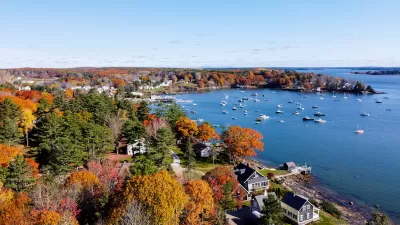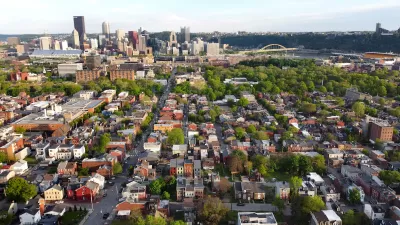Around the world, people continue to move toward urbanized areas in search of opportunity. Developing megacities and megaregions must plan ahead for the continued growth, according to Bloomberg.
Faced with the prospect of a larger and larger share of humanity moving to developed areas of the world, Peter Coy writes an article suggesting that "sprawl can be beautiful," if growth is managed well.
Coy's concern is with the growth of sprawling megacities, like Dhaka, Lagos, Manila, and Rio de Janeiro, countering those in rich western cities who romanticize "the ingenuity and perseverance of slum dwellers."
Coy is following the lead of a 2011 article from the McKinsey Global Institute titled "What’s the biggest limit on city growth? (Hint: it’s not steel or cement).” The answer to the trivia question, Coy explains, is management. New York, Paris, and Tokyo were all ungovernable at points in their development, says Coy, and developing megacities don't currently have the same advantages that now established cities had at similar points in their development.
As examples of better management and planning in developing cities, Coy points to Curitiba, with the leadership of Jaime Lerner, and Valledupar, in Colombia. The latter provides a repeated touch point throughout the article.
FULL STORY: Sprawl Can Be Beautiful—if Cities Learn to Manage Growth

Alabama: Trump Terminates Settlements for Black Communities Harmed By Raw Sewage
Trump deemed the landmark civil rights agreement “illegal DEI and environmental justice policy.”

Planetizen Federal Action Tracker
A weekly monitor of how Trump’s orders and actions are impacting planners and planning in America.

The 120 Year Old Tiny Home Villages That Sheltered San Francisco’s Earthquake Refugees
More than a century ago, San Francisco mobilized to house thousands of residents displaced by the 1906 earthquake. Could their strategy offer a model for the present?

Indy Neighborhood Group Builds Temporary Multi-Use Path
Community members, aided in part by funding from the city, repurposed a vehicle lane to create a protected bike and pedestrian path for the summer season.

Congestion Pricing Drops Holland Tunnel Delays by 65 Percent
New York City’s contentious tolling program has yielded improved traffic and roughly $100 million in revenue for the MTA.

In Both Crashes and Crime, Public Transportation is Far Safer than Driving
Contrary to popular assumptions, public transportation has far lower crash and crime rates than automobile travel. For safer communities, improve and encourage transit travel.
Urban Design for Planners 1: Software Tools
This six-course series explores essential urban design concepts using open source software and equips planners with the tools they need to participate fully in the urban design process.
Planning for Universal Design
Learn the tools for implementing Universal Design in planning regulations.
Clanton & Associates, Inc.
Jessamine County Fiscal Court
Institute for Housing and Urban Development Studies (IHS)
City of Grandview
Harvard GSD Executive Education
Toledo-Lucas County Plan Commissions
Salt Lake City
NYU Wagner Graduate School of Public Service





























